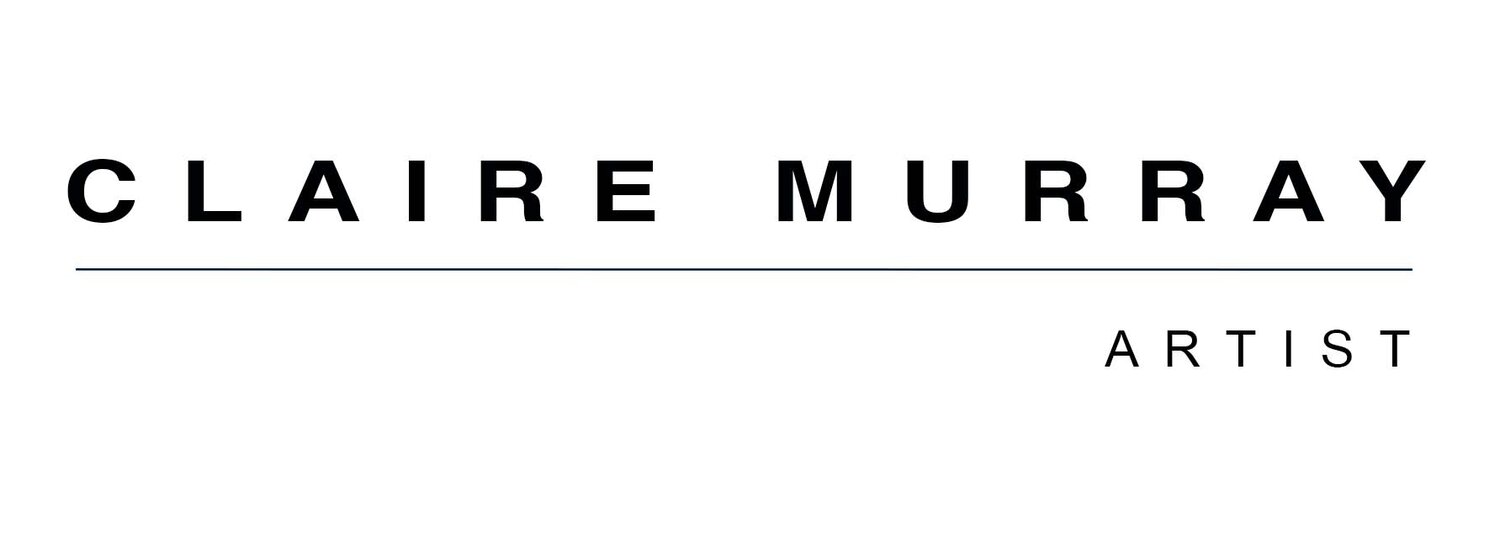My paintings are in a state of transition at the moment, and past work was more obviously concerned with the landscape, it’s topography, ecology and our relationship to it as humans. It was time to sit down, reflect and clarify my intentions as an artist and update my artist statement.
At university during my undergraduate degree, I was heavily influenced by the Abstract Expressionists, such as Robert Rauschenberg, Jasper Johns, Wassily Kandinsky and Willem Da Kooning, and the British poet Ted Hughes. These artists, and the work of Peter Lanyon and Graeme Sutherland, have stayed with me throughout my own development as a contemporary artist in the UK. During my MA in Fine Art, I explored more conceptual and mixed media forms, such as installation, photography and film, before returning to painting later.
My paintings are essentially about the world around me, and are an attempt to understand the systems and natural order of our existence. I am inspired by the landscape, its geography, topography, light, colour, texture and sense of place and space. As a visual artist, the physical natural environment gives me such a lot of visual stimuli to work with, and feeds my mental and imaginative landscapes to the point that I never work to ‘represent’ a place, but perhaps try instead to ‘inhabit’ that space within a painting.
I observe, think, read and watch, but the way I approach a painting is instinctive and process driven, working through a piece layer by layer, until the painting reveals itself to me. The substrate I begin with, always helps me form the initial marks, and so leads the process – a hard wooden surface is resistant and perfect for collage, texture and crisp line; a soft, smooth canvas perfect for thin, pouring applications and more careful brushwork. So, my starting points vary, depending on the surface, and the process develops with each thin, thick, translucent or opaque layer. Often, the paint is applied, and is scraped back to reveal stains, remains of colour layer over one another, and creating much more depth of colour. I spray, wipe, smudge and transfer, and paint some more. I was uncertain of colour for a long time, but through many explorations, my understanding of colour has grown considerably, and I take much care to mix up my colours on my palette, (rather than use them straight from the tube).
The physicality of the paint has always fascinated me, and I often use collage and non-traditional art materials in the creative process to prepare interesting surface texture on my canvas (I was known to use bitumen and other toxic materials as an undergraduate, which I baulk at now). I often let gravity, and perhaps the laws of physics, be part of the process – allowing the paint to puddle, drip, splash and blend on its own, but with guidance from me as I carefully choose the paint colour, consistency and composition. I prop up the painting for drips to move the paint, or work on the floor, allowing puddles to form, merge and blend. Working on the floor also allows me a real sense of freedom from being stuck in a conventional composition with a top, middle and bottom, and the ability to walk round and around a piece, seeing it from all angles. This way, the composition stays balanced and even, but is always much more exciting and dynamic. There are often strong contrasts in my paintings – such as light and dark values, soft and hard edges, smooth and textured areas, colour opposites that are at once harmonious and surprising.
I would also consider myself a painter who draws, as almost every piece contains some form of line which contrasts with the paint: thin, spindly lines in crayon, paint or etched into the surface, to somehow unify my composition, suggesting energy or perhaps a form of scarring the surface.
The vertiginous nature of a lot of my paintings suggests some sort of treacherous path along a steep ridge, at once beautiful and dangerous, risky and rugged, and teetering somewhere between safety and peril. How easy it might be to, literally, tumble down the hill-side; falling, being a recurring ‘fear’ dream of mine as a child. I am interested in the balance between representation and abstract expression, where the representational landscape that is inherent, begins to shift towards more abstract concepts concerning energy, light and space, and indeed our place in the universe and our relationship with it.
There is no attempt to recreate a perfect ‘scene’, but to convey textures, colour palette and light of exterior (and sometimes interior) spaces we all recognise, remember or imagine. I explore ideas of exposure and sanctuary, the idea that the landscape is at once beautiful, safe, romantic and soft, but also treacherous, sinister and often dangerous. Dangerous conditions masquerading as beauty. The elements: water, earth, air and sky are present in almost all of the pieces, suggesting a natural order, balance, drama and fragility of our environment.


